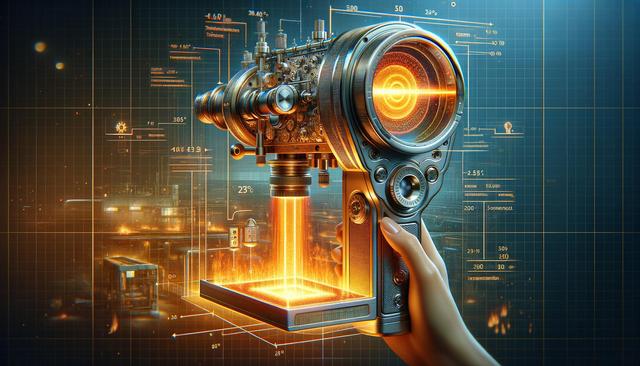Understanding the Working Principle of Pyrometers
Pyrometers operate on the principle of detecting infrared radiation emitted by an object. Every object above absolute zero emits thermal radiation, and the intensity of this radiation increases with temperature. By capturing and analyzing this radiation, pyrometers can estimate the temperature from a distance. This non-contact method is especially useful in industrial settings where objects may be moving, extremely hot, or located in environments that are unsafe for physical proximity. The core components of a pyrometer often include a lens to focus the radiation, a detector to convert it into an electrical signal, and a display to present the temperature reading. There are two main types of pyrometers: optical and infrared. Optical pyrometers compare the brightness of the object with a calibrated light source, while infrared pyrometers detect radiation in the infrared spectrum and are more common due to their versatility.
Advantages of Using Pyrometers in Industry
Pyrometers offer several distinct advantages over traditional contact-based thermometers, especially in environments where extreme conditions exist. Their ability to measure temperature without direct contact provides safety and efficiency in various applications. Some notable benefits include:
- Non-contact measurement prevents contamination and wear on sensors.
- High-temperature range coverage, ideal for furnaces and molten metals.
- Rapid response time, suitable for fast-moving or transient processes.
- Improved safety by allowing remote monitoring in hazardous environments.
These advantages make pyrometers especially valuable in industries such as metal processing, glass manufacturing, and chemical production, where maintaining precise temperature control is critical to product quality and operational safety.
Common Applications Across Different Sectors
Pyrometers are widely used across multiple sectors due to their adaptability and reliability. In metal manufacturing, they are essential for monitoring the temperature of molten materials during casting and forging. Glass production utilizes pyrometers to ensure uniform heating during forming and annealing processes. In the energy sector, pyrometers help maintain optimal temperatures in boilers and turbines. The food industry also uses infrared pyrometers for quick surface temperature checks during cooking or packaging. Some typical applications include:
- Monitoring temperature in kilns, reactors, and furnaces.
- Quality control in heat treatment processes.
- Engine diagnostics and thermal testing in automotive sectors.
- Environmental monitoring in waste incineration plants.
The flexibility of pyrometers allows integration into automated systems, enabling continuous monitoring and data logging to enhance process control and traceability.
Factors Influencing Pyrometer Performance
While pyrometers are highly effective, their accuracy and performance can be influenced by several factors. One key consideration is emissivity—an object’s ability to emit thermal radiation. Different materials have different emissivity values, and incorrect settings can lead to inaccurate readings. Surface condition, such as oxidation or roughness, also affects emissivity. Other important factors include:
- Distance to the target: Greater distances may reduce accuracy without proper optics.
- Obstructions: Dust, steam, or smoke can interfere with radiation transmission.
- Ambient temperature: Extreme changes can affect calibration and sensor function.
To ensure optimal performance, it’s essential to select the right type of pyrometer for the application, calibrate regularly, and account for environmental conditions during use.
Choosing the Right Pyrometer for Your Needs
Selecting a suitable pyrometer involves evaluating the specific requirements of the application. Key factors to consider include the temperature range, measurement distance, target size, and environmental conditions. For example, a short-wavelength infrared pyrometer is more suitable for measuring metals due to their low emissivity, while a long-wavelength version may be better for non-metallic surfaces. Additional features to look for might include:
- Digital displays and interfaces for ease of use.
- Data logging capabilities for tracking temperature trends.
- Adjustable emissivity settings for enhanced accuracy.
- Built-in laser pointers for precise targeting.
Understanding these features ensures that users select a device that aligns with both operational demands and safety requirements. Consulting with technical experts or reviewing product specifications can also help in making an informed choice that maximizes efficiency and reliability.
Conclusion: Enhancing Temperature Measurement with Pyrometers
Pyrometers play a crucial role in modern temperature measurement, especially in environments where contact methods are impractical or unsafe. Their ability to provide fast, accurate, and remote readings makes them indispensable across a variety of industries. By understanding the principles behind their operation, recognizing influencing factors, and choosing the appropriate model for the task, users can significantly improve measurement accuracy and process efficiency. Whether for industrial manufacturing, energy production, or food processing, pyrometers offer a reliable solution for precise thermal monitoring.




Leave a Reply